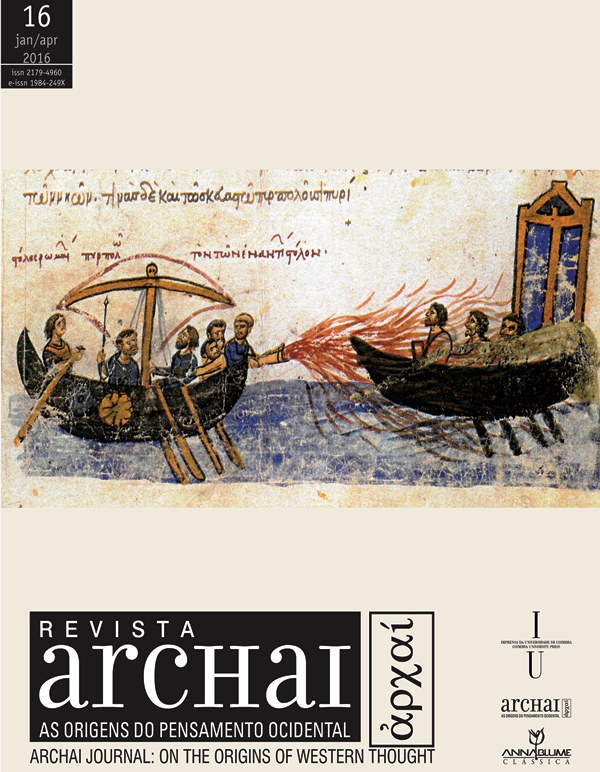A transmigração da causalidade no Fédon de Platão
DOI:
https://doi.org/10.14195/1984-249X_16_9Keywords:
Causality, Forms, Participation, Palingenesis, Causalidade, Formas, Participação, PalingenesiaAbstract
Abstract: In the dialogue that shows the last philosophical speech of Socrates, Plato examines the theme of death: Socrates explores the tradition of Mysteries to find images that may justify his unusual attitude towards death. The very definition of death presupposes the existence and survival of the soul. Without defining the soul, Plato reconfigures the axioms based on the heterogeneity of the Mysteries. This reconfiguration of ancient beliefs results in the causal transmigration that moulds the hypothesis of Forms. The composition of the final myth is the results on a long dialectical pursue which re-establishes the discursive reason of images qualified as a “noble risk” (‘καλὸς’, Phd. 114d6). The aim of this analysis is thus to identify the itinerary by which the ‘noble risk’ of palingenesis constructs the axiom and the causal principle of Forms as the explanation of truth and the nature of all beings.
Keywords: Causality, Forms, Participation, Palingenesis.
Downloads
Downloads
Published
How to Cite
Issue
Section
License
Given the public access policy of the journal, the use of the published texts is free, with the obligation of recognizing the original authorship and the first publication in this journal. The authors of the published contributions are entirely and exclusively responsible for their contents.
1. The authors authorize the publication of the article in this journal.
2. The authors guarantee that the contribution is original, and take full responsibility for its content in case of impugnation by third parties.
3. The authors guarantee that the contribution is not under evaluation in another journal.
4. The authors keep the copyright and convey to the journal the right of first publication, the work being licensed under a Creative Commons Attribution License-BY.
5. The authors are allowed and stimulated to publicize and distribute their work on-line after the publication in the journal.
6. The authors of the approved works authorize the journal to distribute their content, after publication, for reproduction in content indexes, virtual libraries and similars.
7. The editors reserve the right to make adjustments to the text and to adequate the article to the editorial rules of the journal.



